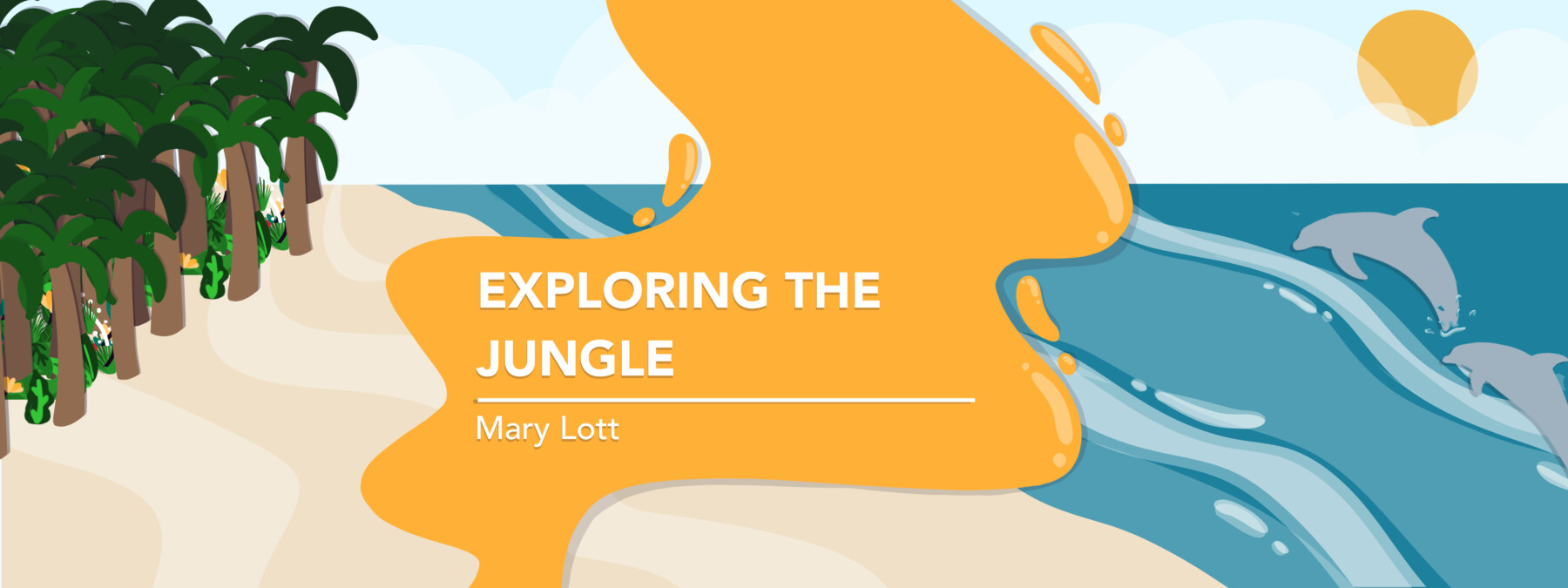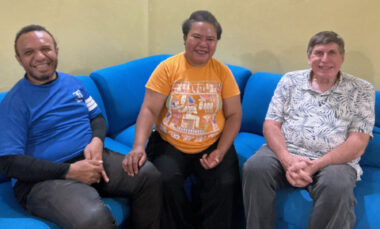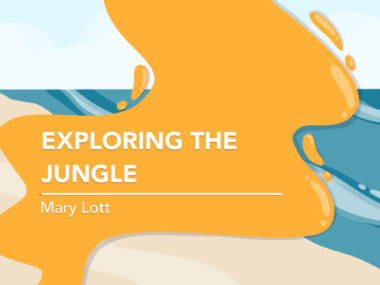Coping with cross-cultural connections and CAD
It's a fatigue-fueled foreign life, but I'm grateful
Written by |

“Don’t use that glass! Get one from the cupboard,” I sternly told one of our boys last week.
Our next-door neighbors were coming over to visit immediately after supper. I’d already prepped a serving tray containing glasses, napkins, a water pitcher, and freshly picked pineapple cut into slices. I do prep work hours in advance of an activity so that I don’t have to work in a rush at the last minute. This is an accommodation I make for my cold agglutinin disease (CAD).
CAD keeps me in a constant state of fatigue. It also extends recovery times for various illnesses to extraordinary lengths. This is due to the destruction of my red blood cells because of CAD.
This year, I’ve spent eight months recovering from a hemolytic event, when I lost many red blood cells and my hemoglobin count plunged. I’m mostly recovered, but if I’m slightly active or stressed, breathing difficulties still tend to occur.
That’s why I prepared for this visit before supper, which was also prepared ahead of time and kept warm. But if my boys had raided the visitors’ tray, I’d have to do all the work again. It’s nothing extraordinary, but doing things at the last minute is stressful.
Cultural connections
My husband and I are incredibly blessed by our neighborhood here in Papua, Indonesia. Our neighbors accommodate our Western habits, and we adjust to the local culture. This means we don’t panic or get upset in December when explosions sporadically occur throughout the neighborhood. These are “meriam bambu,” or bamboo cannons.
Bamboo cannons are simple to make. A closed section of bamboo is heated, usually by tossing it into a fire. The air inside is heated and expands, and the bamboo eventually explodes. It is very loud, but not always loud enough for local tastes. So “meriam karabin” (a carbine rifle) and “meriam kanon” (a cannon) are also enjoyed — by everyone but me. Still, it is the local custom, and I am the guest.
I’ve also learned to adapt to “jam karet,” or rubber time, meaning that time is flexible — like rubber. However, I was raised with the idea that one should be in place and prepared at least five minutes before an appointment. On this evening, my neighbors arrived 45 minutes after our agreed-upon time. I had expected this, yet still found it stressful.
The visit went well. I greeted Bapak Sueboo (Mr. Sueboo) the same way one would back home in Alabama. But I greeted Ibu Sueboo (Mrs. Sueboo) differently. We air-kissed each other’s cheeks as we double-clasped our hands. Then, we sat down and conversed in Bahasa Indonesia, the national language, for about an hour.
Reflections on resilience

From left, Mr. and Mrs. Sueboo visit with Mary’s husband, Mike. (Photo by Mary Lott)
Everything I just shared can easily be accomplished when one is healthy. I am not healthy. The description of a local holiday custom that lasts for over a month and the visit with our good friends illustrate how CAD challenges me to maintain the life I’ve always enjoyed.
Although I have lived here for a while, I will always be a stranger. I like to think that I’m a welcome stranger, but the strain of trying to accommodate local customs is never far away. I’m constantly adjusting my expectations in light of constant fatigue. (After the visit, I required two days to destress enough to regain my voice.) And while explaining the disease is hard enough in English, I can’t be sure I’m making myself “terang,” or clear, in my second language.
Despite the challenges of dealing with CAD in a cross-cultural life, I’m thankful for the opportunities I’ve had, which have benefited me in many ways. As Robert Frost wrote in “The Road Not Taken,” “I took the one less traveled by,/ And that has made all the difference.”
Note: Cold Agglutinin Disease News is strictly a news and information website about the disease. It does not provide medical advice, diagnosis, or treatment. This content is not intended to be a substitute for professional medical advice, diagnosis, or treatment. Always seek the advice of your physician or other qualified health provider with any questions you may have regarding a medical condition. Never disregard professional medical advice or delay in seeking it because of something you have read on this website. The opinions expressed in this column are not those of Cold Agglutinin Disease News or its parent company, Bionews, and are intended to spark discussion about issues pertaining to cold agglutinin disease.





Deb
Mary - God Bless you 🙏 I have other issues,like ky Krebs cycle is broken and i dont make energy, so I can relate to your challenges . I came across your posts, and I'm glad I did. I admire your fortitude and love the way you always try to"make lemonade out of lemons". That attitude has brought you to write such great articles. Keep on keeping on for as long as you can! I'm rooting for you!!